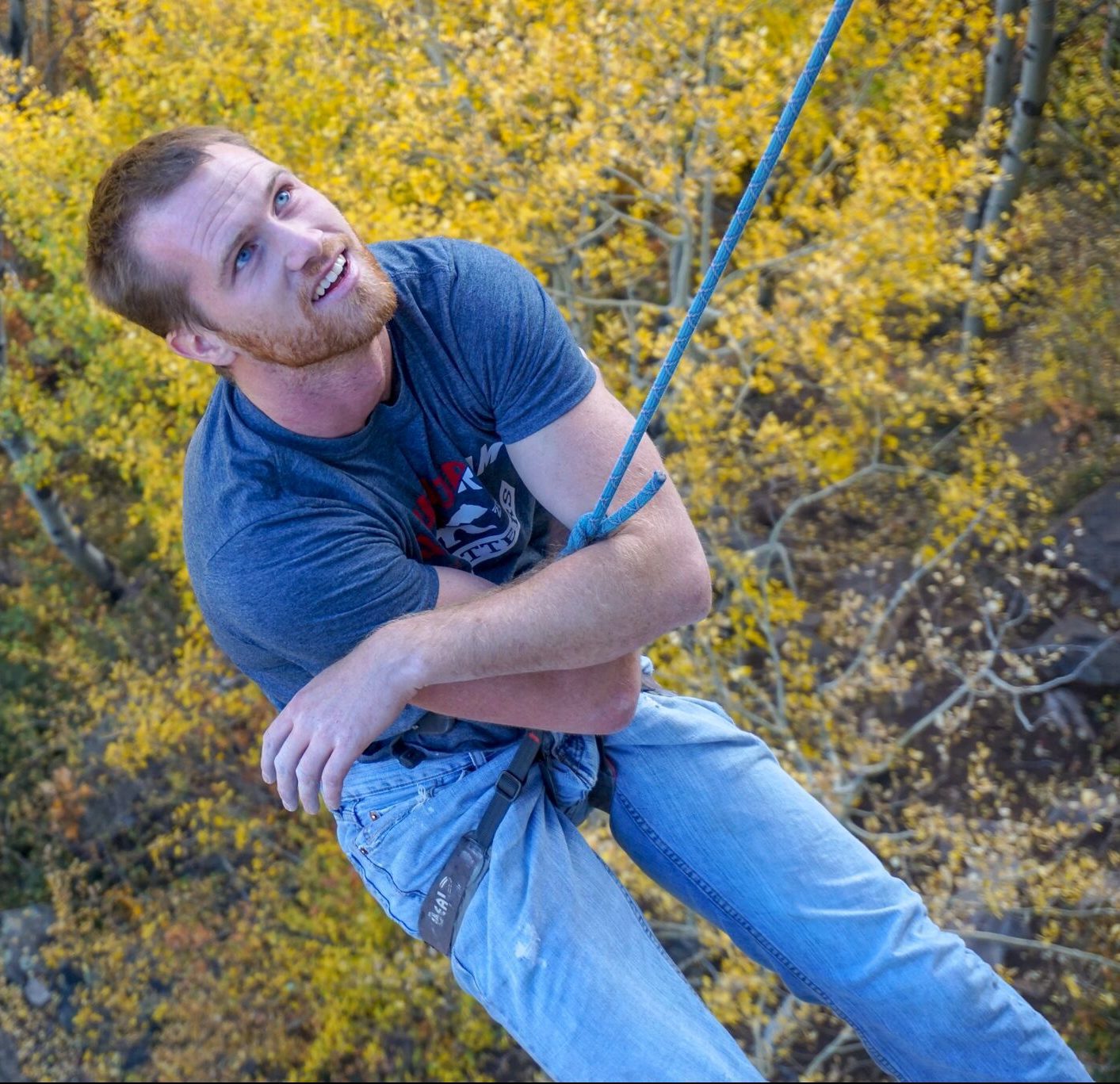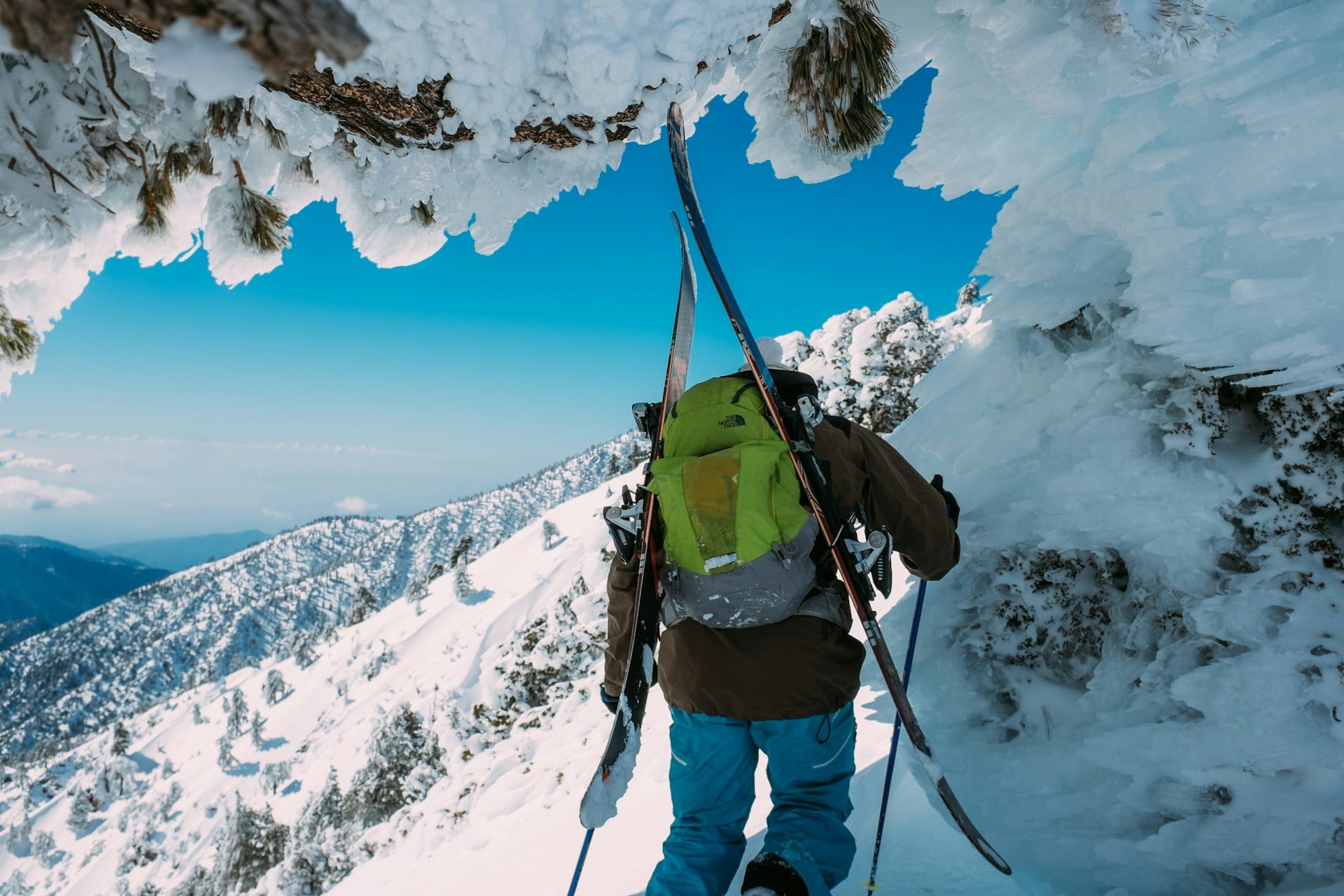A Rock Climbing Guide’s Perspective
Fall in Vail is an exceptional time to climb, and not just because of the beautiful aspens changing and coloring every mountain side a burning yellow.
The shaded crags, or climbing areas, like Roof Rock and Gilman Canyon can be covered in snow during the winter. But right now, they are a pleasant temperature and a perfect escape to spend time beside the river before the cold sets in.
The sunny crags, on the other hand, like Wolcott have more of a desert landscape. In the summer these crags are hotter; rubber becomes soft, making footwork more challenging. In the fall these direct sun areas become respites when shady spots become cool.
Towards the end of summer, guides dream of the upcoming ice/snow season. While I’m excited to get out in the powder, I’m also reminded of why I guide; the experiences I can relate to the winter and those that are so unique to guiding on rock.

Fishing on the Rock PH: Amy Pizarro Griffiths
Whether guiding in the winter or summer, when the timing is right, I encourage clients to fish for answers independently; to learn self-sufficiently and to trust themselves, affirming what their minds and bodies can do. It is easy to look to our mentors for advice, especially given their experience and skills. But if we refrain from asking for every solution, we force ourselves to learn and to grow. At times, fishing is challenging and the more we focus on this endeavor the easier it is to remember.
Climbing is unique – the whole time on the rock, climbers have a partner attached to the other end of the rope. When adrenaline builds up, our instinct is to rely on the first solution we find. It may be an obvious hold or the advice of a friend. Sometimes the solution is to give in and sit onto the rope or ask to be lowered. Being tied to our clients makes it harder for us to let them fish independently. It is a never-ending art; finding the balance between supporting clients and knowing when to stand back and allow them to explore.
Knowing when to give space to a climber is a gift to the climber, giving that time for immersion and introspection. Seasoned guides will often do this intuitively and seamlessly, quietly encouraging the climber with something as simple as “breathe”, a good mantra for climbers and spectators alike.
We all have different minds and bodies. No one single answer works for everyone. Usually, as experienced guides, we can give an educated guess on the next move. Yet we’re often surprised at the unique ways clients move through sequences we know to be done differently.
There is an incomparable connection between a climbing guide and his/her client. I see how much they appreciate the delicate balance of support and guided discovery. When a first-time climber comes down off a route after overcoming a challenging sequence there is always a mutual unspoken appreciation for what just happened. They are grateful for having had support and I am honored to have been a part of their experience.
Autumn reminds me to reflect on the clients of a season, and how much challenge and growth I’ve seen them experience. Not to mention my own growth, both climbing on my own and as a guide. As the temperature gets cooler it leaves me wanting to climb and guide as much rock as I can before switching seasons. In Colorado fall is an ideal time to climb rock, so grab a harness, helmet and shoes and get out and enjoy. And don’t forget the icing on the cake: the beautiful fall colors and sticky cool rock!
-Devon Dennis


